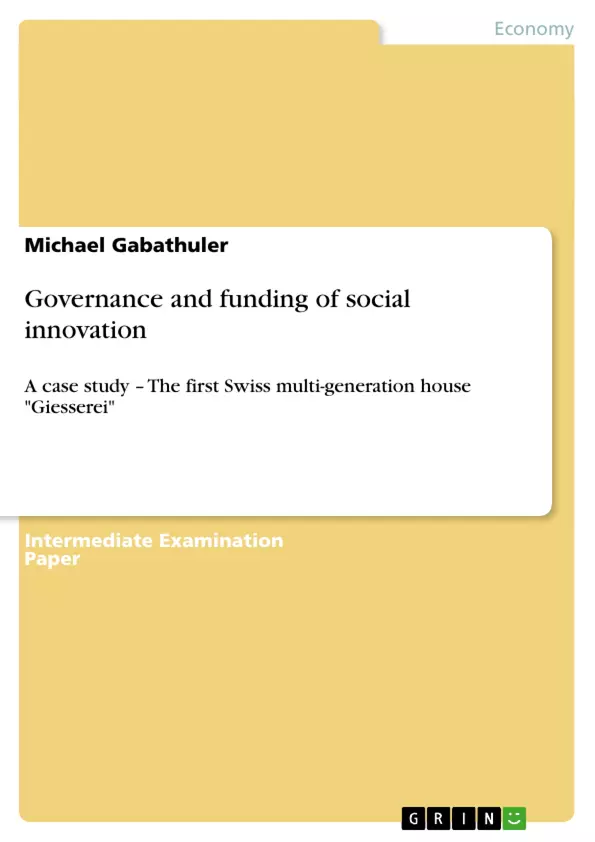In this paper, the new multi-generation housing estate “Giesserei” in Winterthur, Switzerland serves as case study to discuss the purpose of a multi-generation house. The aim is to describe the degree of innovation of this project and answer the question of how its governance and funding look like.
Inhaltsverzeichnis (Table of Contents)
- Introduction
- Case Study - The multi-generation house 'Giesserei'
- Is the multi-generation house 'Giesserei' an innovation?
- Degree of novelty
- Different kinds of innovation
Zielsetzung und Themenschwerpunkte (Objectives and Key Themes)
This paper explores the governance and funding of the "Giesserei" multi-generation housing estate in Winterthur, Switzerland. The objective is to examine the innovation of this project and understand how its governance and funding are structured. The case study focuses on a self-organized community model that seeks to promote social and ecological sustainability.
- Multi-generational housing as a response to demographic change
- The role of self-organization and community building in multi-generational housing
- The innovative nature of the "Giesserei" project in the context of Swiss housing
- Financial models and governance structures for multi-generation housing projects
- Social and ecological sustainability as key principles of the "Giesserei" model
Zusammenfassung der Kapitel (Chapter Summaries)
- Introduction: The introduction discusses the historical decline and recent resurgence of multi-generational housing. It highlights the need for self-organization, commitment, and participation in creating sustainable multi-generational communities. The case study of the "Giesserei" in Winterthur is introduced.
- Case Study - The multi-generation house 'Giesserei': This chapter provides a detailed overview of the "Giesserei" project, including its inception, objectives, and key features. It emphasizes the project's commitment to social and ecological sustainability, as well as its focus on co-creation and community building.
- Is the multi-generation house 'Giesserei' an innovation?: This chapter explores the degree of novelty and different kinds of innovation in the "Giesserei" project. It differentiates between radical and incremental innovation, and discusses the project's uniqueness in the Swiss context. The chapter also analyzes the project as a process innovation, highlighting the importance of community co-creation and ongoing development.
Schlüsselwörter (Keywords)
Key terms and concepts explored in the text include: multi-generation housing, community building, self-organization, social sustainability, ecological sustainability, co-creation, innovation, governance, funding, case study, "Giesserei" project.
- Citation du texte
- Master of Art Michael Gabathuler (Auteur), 2013, Governance and funding of social innovation, Munich, GRIN Verlag, https://www.grin.com/document/268850



